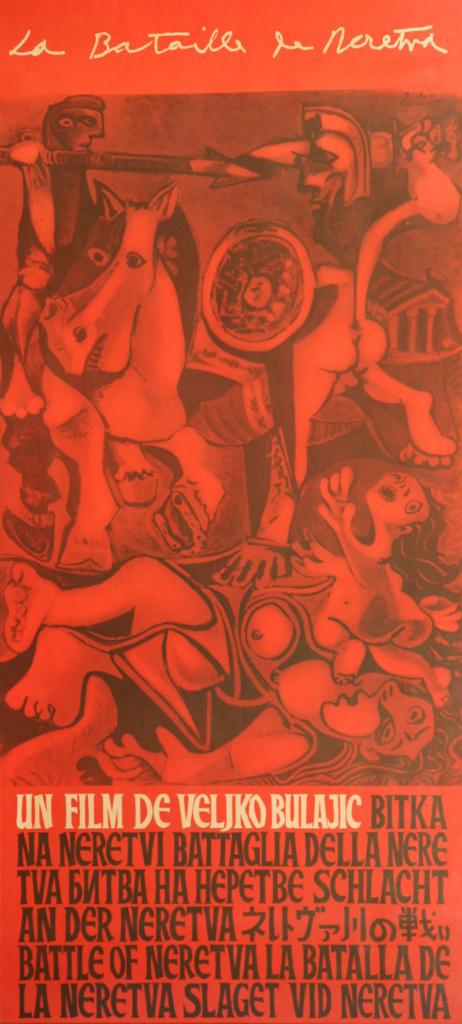
Unveiling Picasso’s Artistry: The Story of “The Battle of Neretva” Film Poster
Welcome to the enchanting world of cinema enthusiasts! Join us on an intriguing journey into the annals of film history and uncover a hidden treasure nestled in the heart of Belgrade. In this narrative, we delve into the captivating tale behind Pablo Picasso’s extraordinary contribution to the iconic Yugoslav film “The Battle of Neretva,” and the fascinating encounter between Picasso and director Veljko Bulajić.
In 1964, fate orchestrated a meeting between Veljko Bulajić and the legendary artist Pablo Picasso at the Monte Carlo Film Festival. Little did they realize that their encounter would lead to an unparalleled collaboration. The film, “The Battle of Neretva,” achieved global acclaim, securing an Oscar nomination for Best Foreign Film and captivating audiences across 80 nations.
Inspired by the film’s gripping narrative, Picasso’s curiosity was piqued, driving him to watch “The Battle of Neretva” before making a decision. Intrigued by the tale of anti-fascist resistance and liberation, Picasso chose to incorporate elements from his renowned artwork, “The Rape of the Sabine Women,” into the film’s poster. These motifs, painted in a striking red hue, symbolized the battle against oppression, infusing the artwork with compelling visual intensity.
Picasso, renowned for his enigmatic generosity, declined financial compensation for his poster work. Instead, he made a modest request: 12 bottles of Yugoslavian wine. Seizing the opportunity, Veljko Bulajić, a passionate wine enthusiast, curated a selection of exquisite wines from Dalmatia, Serbia, and Macedonia. This gesture not only formed a bond that transcended art but also celebrated the essence of cultural exchange.
Now, dear readers, allow us to introduce you to the pinnacle of this extraordinary tale—the Museum of Cinema in Belgrade. With the Belgrade Card, your key to exploration, you can unlock free access to this treasury of Belgrade’s marvels. Step into the museum and immerse yourself in the evolution of film, from its humble origins to the contemporary wonders gracing the silver screen today.


